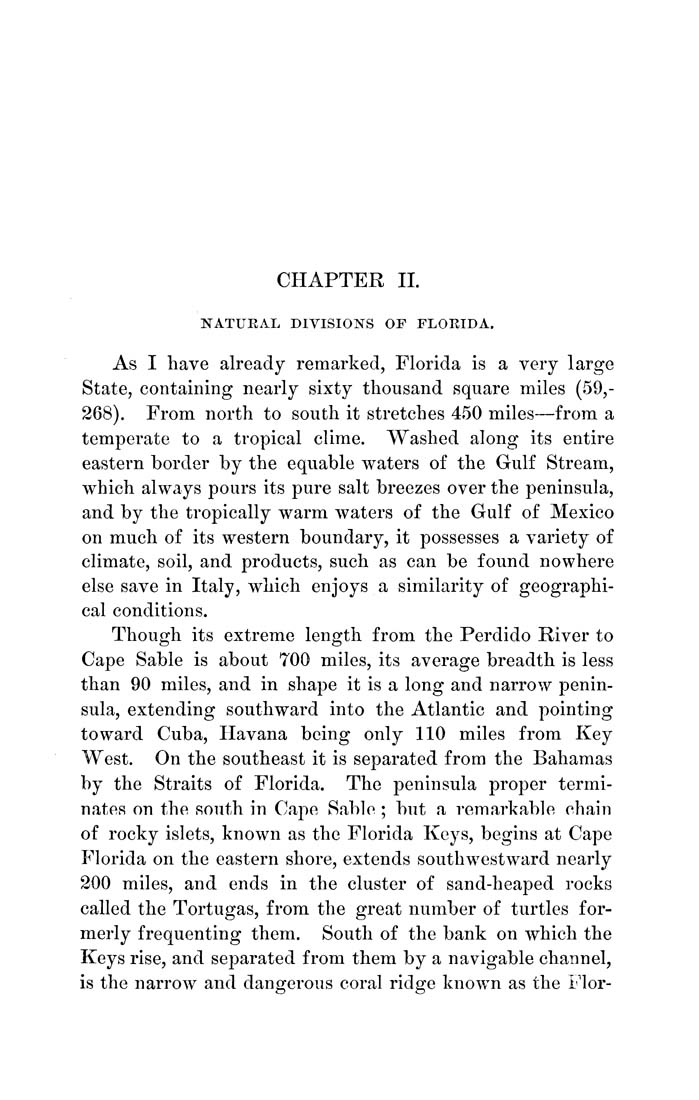CHAPTER II.
NATUEAL DIVISIOIS^S OF FLORIDA.
As I have already remarked, Florida is a very large
State, containing nearly sixty thousand square miles (59,-
268). From north to south it stretches 450 miles—from a
temperate to a tropical clime. Washed along its entire
eastern border by the equable waters of the Gulf Stream,
which always pours its pure salt breezes over the peninsula,
and by the tropically warm waters of the Gulf of Mexico
on much of its western boundary, it possesses a variety of
climate, soil, and products, such as can be found nowhere
else save in Italy, which enjoys a similarity of geographi¬
cal conditions.
Though its extreme length from the Perdido River to
Cape Sable is about 700 miles, its average breadth is less
than 90 miles, and in shape it is a long and narrow penin¬
sula, extending southward into the Atlantic and pointing
toward Cuba, Havana being only 110 miles from Key
West. On the southeast it is separated from the Bahamas
by the Straits of Florida. The peninsula proper termi¬
nates on the south in Cape Sable ; but a remarkable chain
of rocky islets, known as the Florida Keys, begins at Cape
Florida on the eastern shore, extends south westward nearly
200 miles, and ends in the cluster of sand-heaped rocks
called the Tortugas, from the great number of turtles for¬
merly frequenting them. South of the bank on which the
Keys rise, and separated from them by a navigable channel,
is the narrow and dangerous coral ridge known as the Flor-
|








